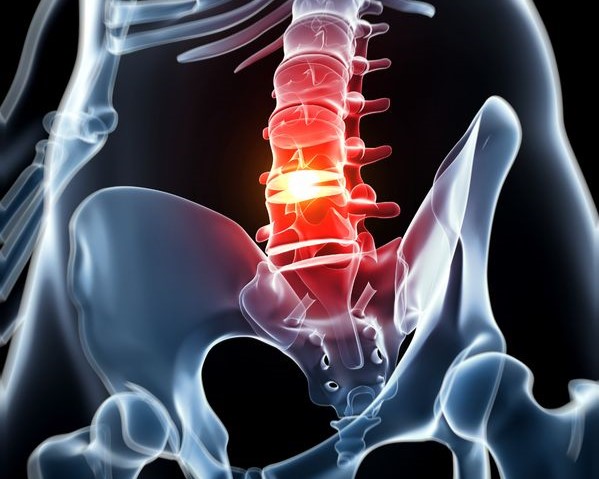Signs and Symptoms
Signs and symptoms of a slipped disc, also known as a herniated or ruptured disc, typically include:
- Back Pain: Persistent, localized pain in the lower back or neck, depending on the disc's location.
- Radiating Pain: Pain that travels down the arm or leg, often following the path of the affected nerve, which can lead to sciatica or brachialgia.
- Numbness and Tingling: Sensations of numbness, tingling, or "pins and needles" in the area supplied by the affected nerve.
- Muscle Weakness: Weakness in specific muscle groups, often corresponding to the affected nerve's function.
- Changes in Reflexes: Altered or reduced reflexes, typically assessed by a healthcare professional.
- Increased Pain with Movement: Pain that worsens with activities like bending, lifting, or coughing.
- Loss of Bladder or Bowel Control: In rare cases, severe disc herniation can lead to loss of control over bladder or bowel functions, requiring immediate medical attention.
Risk Factors
- Age
- Weight
- Occupational factors
- Inactivity
- Degenerative disc disease
- Genetics
Causes
A slipped disc, also known as a herniated or ruptured disc, occurs when the soft inner material of an intervertebral disc protrudes through the tough outer layer. This can happen for a variety of reasons, and the exact cause may vary from person to person. Here are some common factors that can contribute to a slipped disc:
- Age : As people age, the discs in the spine lose some of their water content and become less flexible. This makes them more prone to tearing or rupturing, leading to a slipped disc.
-
Trauma or Injury: Osteoarthritis, Rheumatoid Arthritis, Psoriatic Arthritis Gout etc.
- Repetitive Strain: Repetitive movements or activities that put strain on the spine, especially with poor posture, can contribute to disc degeneration and increase the risk of a slipped disc.
- There may be a genetic predisposition to disc problems. Some people may have a family history of disc issues, making them more susceptible.
Non-Surgical Treatment of Slipped Disc at Panax
- Exercise and Movement: Keep performing your regular activities. Also perform exercises regularly. Ask your doctor for exercises which you can perform daily.
- Medication: Your Pain Specialist may recommend to take certain painkillers and neuro-modulators for severe pain. Medication like Paracetamol, Anti-inflammatory painkillers, opioids can be given to reduce pain. A muscle relaxant drugs is sometimes prescribed for a few days if the back muscles become very tense and make the pain worse.
- Spinal Injections: Cervical, Thoracic and Lumbar Interlaminar Epidural Injections and Transforaminal injection are given into the opening at the side of the spine where the nerve roots exit. These injections reduce the inflammation and swelling of the spinal nerve roots and other tissues surrounding the spinal nerve root. It also reduces pain, tingling and numbness and other symptoms caused by such inflammation, irritation or swelling.
- Radio frequency Ablation: Radio frequency ablation (RFA) is a technique used to reduce pain. In this procedure, a radio wave produces an electrical current, which heats up a small area of nerve tissue. This curbs pain signals from that specific area. It is very beneficial for people with chronic lower back and neck pain and pain related to the degeneration of joints from arthritis.
As with any medical procedure, radio frequency ablation (RFA) is not appropriate for everyone. For example, radio frequency ablation is not recommended for people who have active infections or bleeding problems. Your Pain Specialist Doctor can tell you if you should not have an RFA..
Why Choose PANAX?
PANAX is one of the first multidisciplinary pain management center
offering
comprehensive non surgical pain management services.
All our Treatment are:
- Non surgical
- Takes less than a hour
- Painless
- No blood loss
Diagnosis
Physical examination – can establish the cause behind slipped-disc
pain.
Range of motion – during flexion and
extension
Comparing the functioning of the to your healthy disc.
Imaging tests, such as X-Rays, MRI Scan, CT Scan
Dynamic Ultrasound– This is the gold standard test to
identify the pain
generator and also the
stage of arthritis and it
is to be performed by a pain physician.
